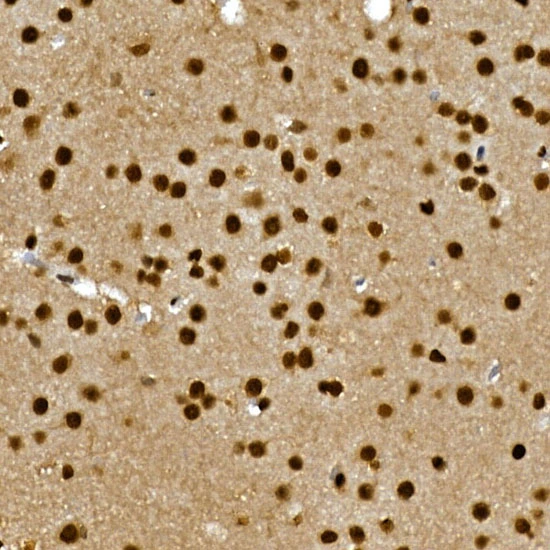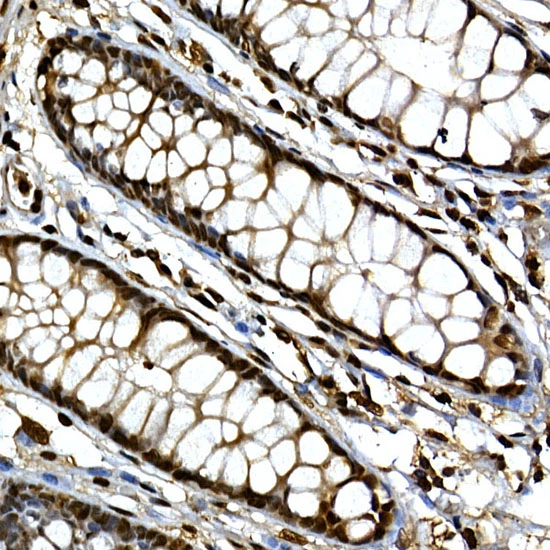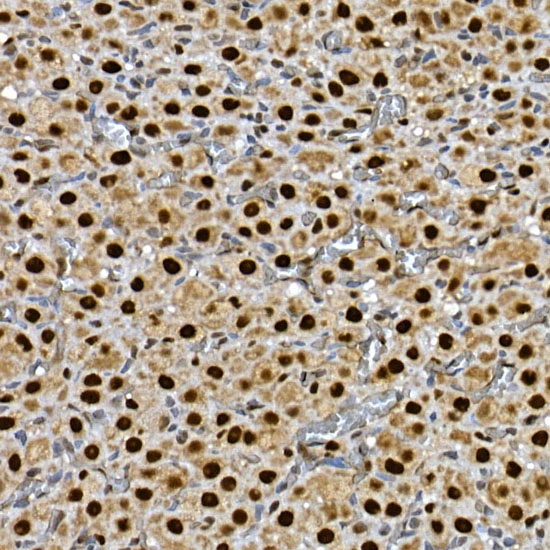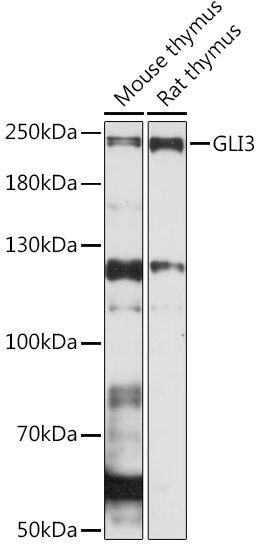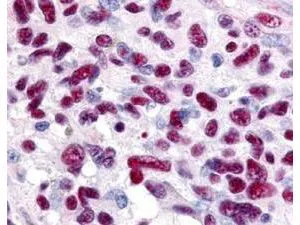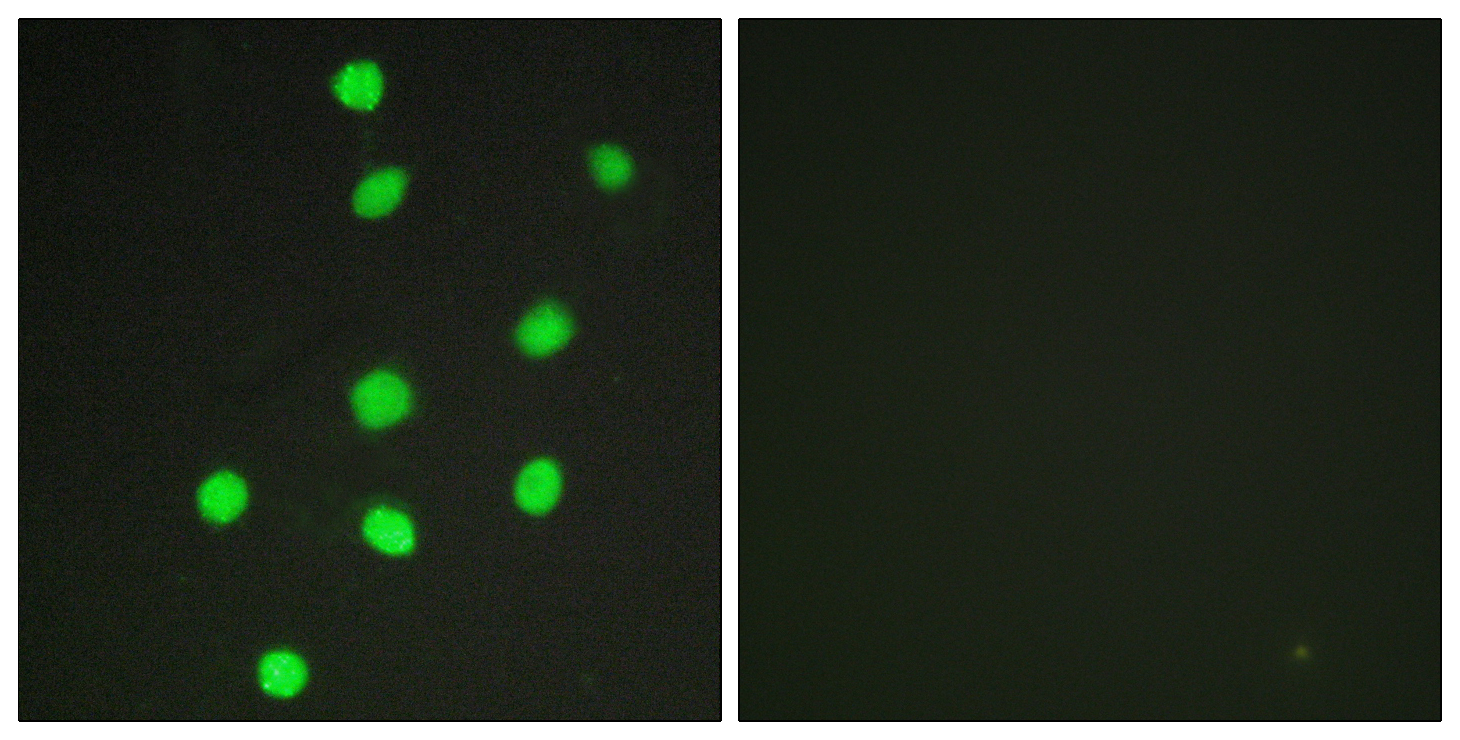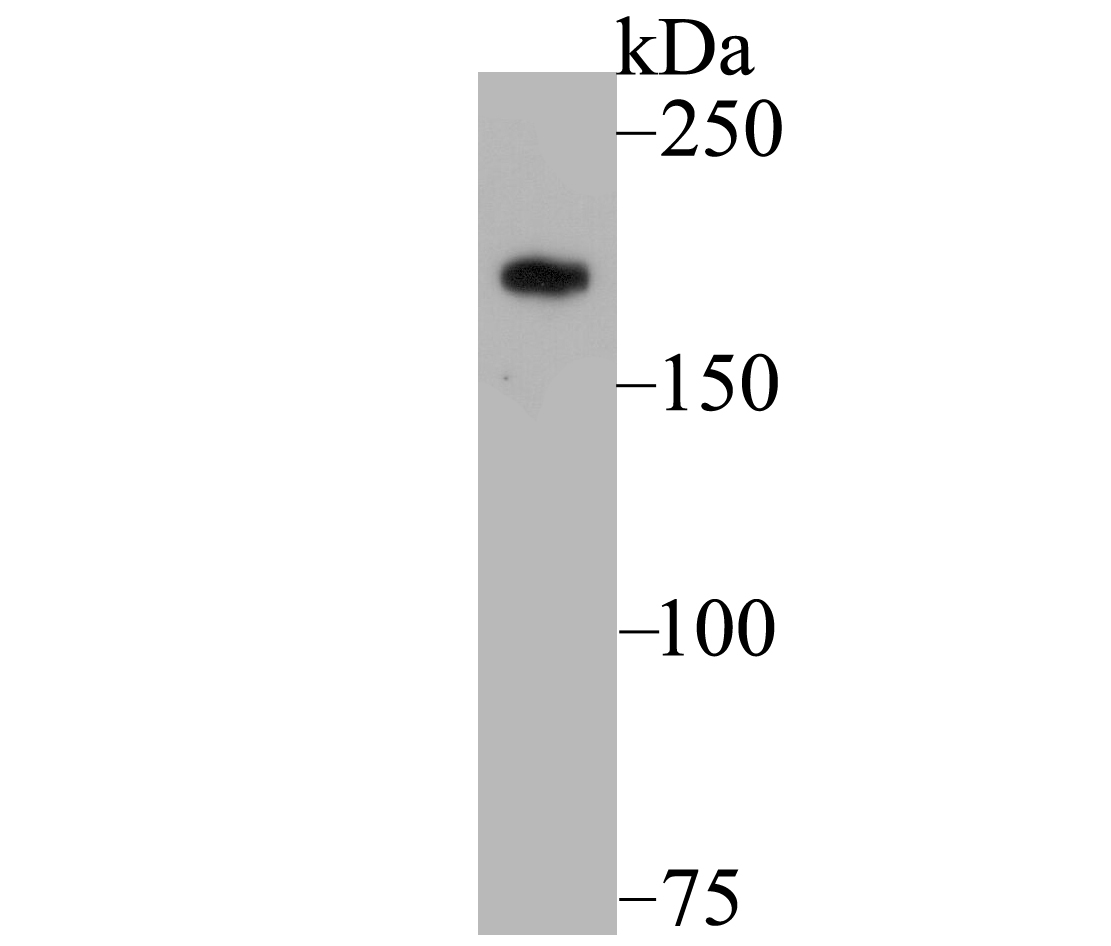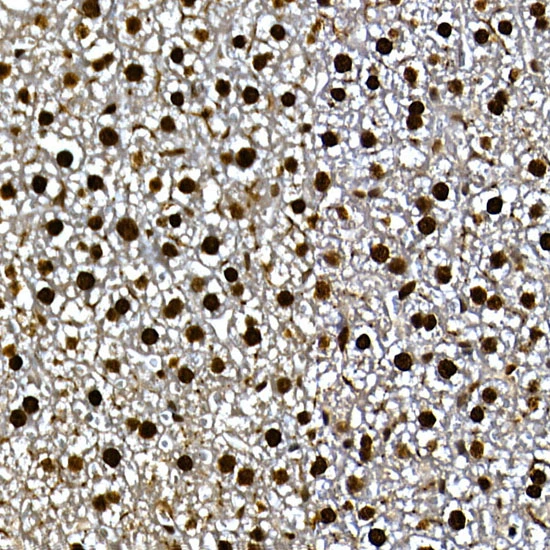
IHC-P analysis of mouse liver tissue using GTX0424 GLI3 antibody. Antigen retireval : Perform high pressure antigen retrieval with 10 mM citrate buffer pH 6.0. Dilution : 1:100
GLI3 antibody
GTX04242
ApplicationsWestern Blot, ImmunoHistoChemistry, ImmunoHistoChemistry Paraffin
Product group Antibodies
TargetGLI3
Overview
- SupplierGeneTex
- Product NameGLI3 antibody
- Delivery Days Customer9
- Application Supplier NoteWB: 1:500-1:2000. IHC-P: 1:50-1:200. *Optimal dilutions/concentrations should be determined by the researcher.Not tested in other applications.
- ApplicationsWestern Blot, ImmunoHistoChemistry, ImmunoHistoChemistry Paraffin
- CertificationResearch Use Only
- ClonalityPolyclonal
- ConjugateUnconjugated
- Gene ID2737
- Target nameGLI3
- Target descriptionGLI family zinc finger 3
- Target synonymsACLS, GCPS, GLI3-190, GLI3FL, PAP-A, PAPA, PAPA1, PAPB, PHS, PPDIV, transcriptional activator GLI3, GLI-Kruppel family member GLI3, glioma-associated oncogene family zinc finger 3, oncogene GLI3, zinc finger protein GLI3
- HostRabbit
- IsotypeIgG
- Protein IDP10071
- Protein NameTranscriptional activator GLI3
- Scientific DescriptionThis gene encodes a protein which belongs to the C2H2-type zinc finger proteins subclass of the Gli family. They are characterized as DNA-binding transcription factors and are mediators of Sonic hedgehog (Shh) signaling. The protein encoded by this gene localizes in the cytoplasm and activates patched Drosophila homolog (PTCH) gene expression. It is also thought to play a role during embryogenesis. Mutations in this gene have been associated with several diseases, including Greig cephalopolysyndactyly syndrome, Pallister-Hall syndrome, preaxial polydactyly type IV, and postaxial polydactyly types A1 and B. [provided by RefSeq, Jul 2008]
- Storage Instruction-20°C or -80°C,2°C to 8°C
- UNSPSC12352203

